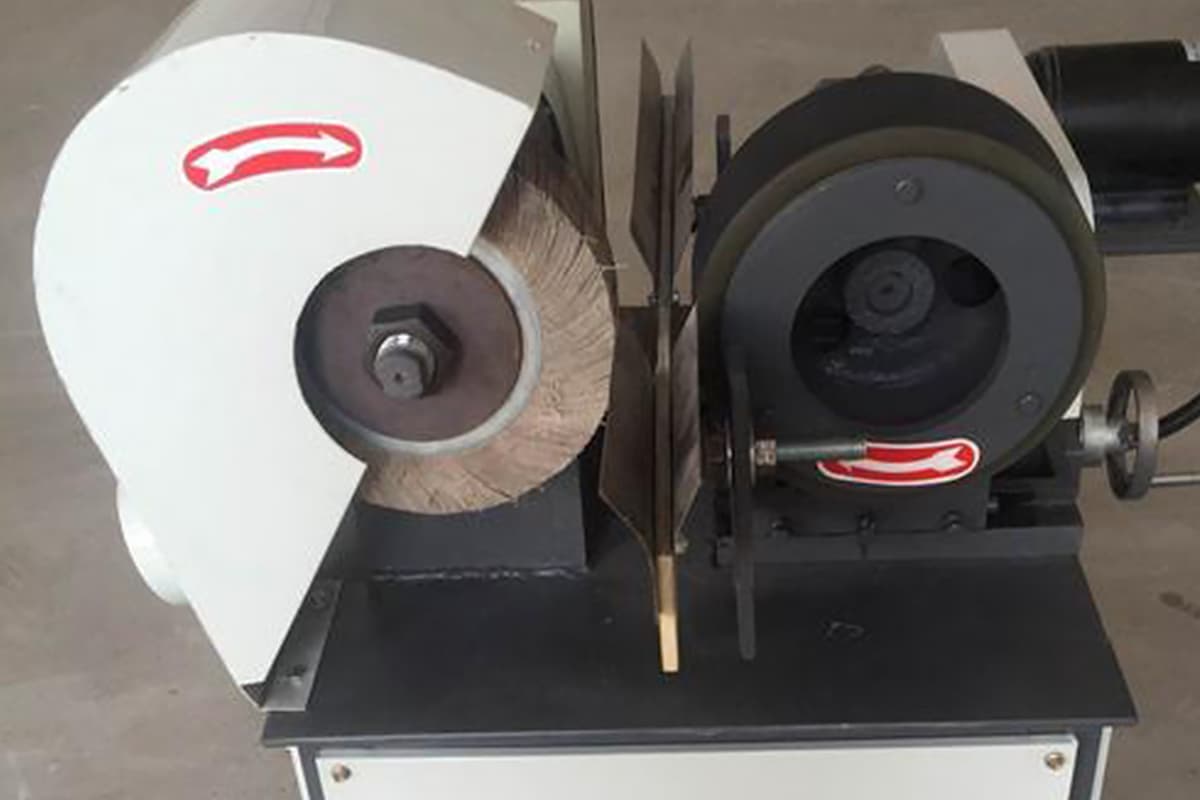A polishing machine is a power tool made up of fundamental components such as base, polishing disc, polishing cloth, polishing cap and cover.
The motor is fixed to the base and the conical bushing used to fix the polishing disc is connected to the motor shaft using screws.
The polishing cloth is attached to the polishing disc through a ring, and when the motor is turned on by turning on the power through the base, the sample can be polished on the rotating disc by applying pressure manually.

The polishing fluid added during the process can flow into a square tray placed on the side of the machine through a drain tube in a plastic tray fixed to the base.
The polishing cap and cap prevent dust and other debris from falling onto the polishing cloth when the machine is not in use, thus maintaining its efficiency.
The key to operating the polishing machine is to achieve the highest possible polishing rate to quickly remove the damaged layer produced during sanding.
At the same time, the damaged polishing layer must not disturb the observed final structure, which means it must not create false structures.
The former requires the use of coarser abrasives to ensure a higher polishing rate to remove the grinding-damaged layer, but the polishing-damaged layer will also be deeper.
The latter requires the best materials to make the layer damaged by polishing shallower, but the polishing rate will be lower.
The best solution to this contradiction is to divide the polishing into two stages. The purpose of rough polishing is to remove the layer of grinding damage, this step should have the maximum polishing rate, and the surface damage formed by rough polishing is a secondary consideration, but it should also be as small as possible.
The second is fine polishing (or final polishing), the purpose of which is to remove surface damage caused by rough polishing, while reducing polishing damage to a minimum.
When the polishing machine polishes, the grinding surface of the sample must be absolutely parallel to the polishing disc and evenly and lightly pressed on it, taking care to prevent the sample from flying and creating new scratches due to excessive pressure.
At the same time, the sample must rotate and move back and forth along the radius of the turntable to avoid rapid local wear of the polishing cloth.
Micropowder suspensions must be added continuously during the polishing process to maintain the polishing fabric at a certain moisture level.
Too much moisture can reduce the effect of polishing scratches, causing the hard phase of the sample to protrude and non-metallic inclusions in the steel and graphite phase in cast iron to produce “tail drag” phenomena.
If the humidity is too low, the sample will heat up due to friction, the lubrication effect will decrease, the grinding surface will lose its gloss, and even black spots will appear, and light alloys will damage the surface.
To achieve the purpose of rough polishing, the speed of the turntable should be relatively low, preferably not exceeding 600 r/min; The polishing time must be longer than the time needed to remove the scratches, as the deformation layer also needs to be removed.
After rough polishing, the sanding surface is smooth but dull, and under the microscope there are uniform and fine scratches that need to be eliminated by fine polishing.
During the fine polishing phase, the speed of the turntable can be increased accordingly, and the polishing time should be sufficient to remove the damage layer caused by coarse polishing.
After fine polishing, the sanded surface shines like a mirror. No scratches are visible under the brightfield conditions of a microscope, but can still be seen under phase-contrast lighting.
The quality of polishing significantly affects the microstructure of the sample and has attracted increasing attention from experts.
In recent years, considerable research has been carried out nationally and internationally into the performance of polishing machines, resulting in numerous new models and generations of polishing equipment, moving from manual operation to various semi-automatic and fully automatic polishers.
Here we introduce the performance and features of several commonly used mechanical polishers.
These machines are specifically designed to process surfaces of steel, aluminum, copper and other metal products and pipes. Dozens of factory-original accessories meet different requirements, effortlessly creating a variety of finishes such as snowflakes, brushed patterns, waves, matte surfaces and mirrors.
They can quickly repair deep scratches and small scratches, as well as sand and buff welds, watermarks, oxidized films, stains and paint quickly. They are suitable for deburring, rounding corners and processing decorative metals.
During operation, they do not create shadows, transition zones or irregular decorative surfaces, making them crucial equipment in the metal products production line.
Polishing machines are applicable in the following industries:
- carpentry and furniture industries for sanding and brushing flat wooden panels, metal furniture handles and other parts
- metallic materials and products, such as aluminum profiles and their products
- stainless steel products and utensils
- copper profiles and products
- plumbing and bathroom equipment
- locks
- lighting products
- nameplates
- metal crafts
- knives and scissors
- door leaves
- auto and bicycle parts
- cutlery
- buckle products
- buttons
- belt buckles
- cell phone shells
- watch industry
- other parts to sand and brush
- electronic components and equipment, such as electronic components, flat screen sanding, brushing, etc.

























































